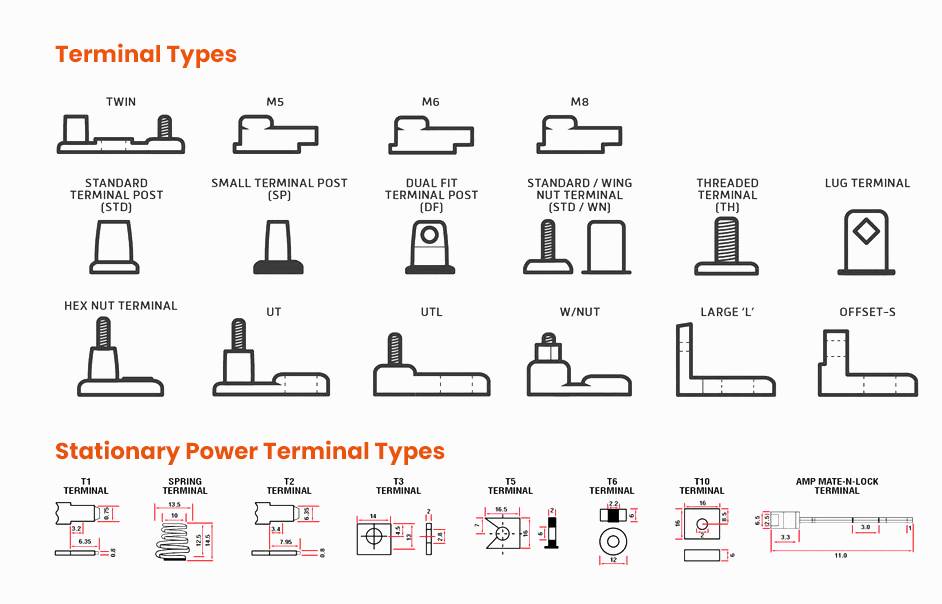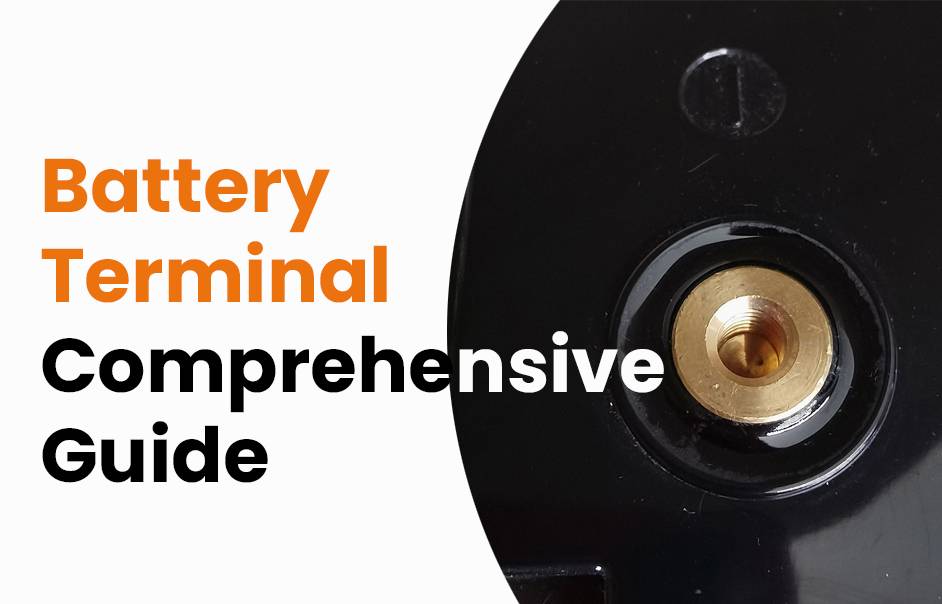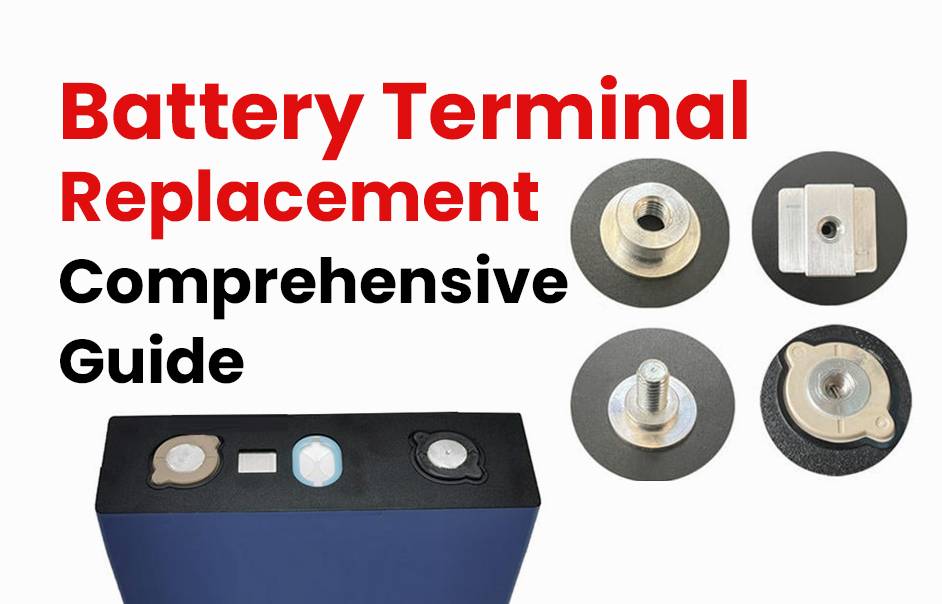Welcome to the world of battery terminals – the unsung heroes ensuring your vehicle’s smooth electrical operation. Often overlooked, these connectors are vital for a reliable start. Whether you’re a car enthusiast or just want a hassle-free ignition, grasping battery terminals is key. This guide covers types, maintenance tips, and signs of trouble. Join us on a comprehensive journey to become a terminal expert and keep your vehicle running seamlessly. Buckle up for terminal wisdom!
Different Types of Battery Terminals
Explore the diverse world of battery terminals – the essential connectors that keep your vehicle powered. In this guide, we’ll break down the common types to help you choose the right one for your needs:
- Post Terminal: Basic and found in older or smaller vehicles, it features a simple post connecting to the battery cable.
- Clamp Terminal: Ideal for marine and heavy-duty vehicles, it secures the cable with a clamp mechanism.
- Ring Terminal: Known for reliability, it has a ring-shaped connector secured with a nut or bolt, often used in automotive applications.
- Side Terminal: Located on the battery’s side, it offers easy cable access and is common in modern vehicles.
- Fusion Terminal: Combining functions like additional connections or fuses, providing an all-in-one solution.
Choose the terminal that suits your vehicle or equipment, and stay tuned for tips on effective cleaning and maintenance to ensure peak performance from your battery system!

How to Clean and Maintain Battery Terminals
Ensure your vehicle’s electrical system stays in top shape by regularly cleaning and maintaining battery terminals. Here’s a simple guide:
- Gather Tools: You’ll need a wire brush, baking soda paste, and gloves for protection.
- Disconnect Negative Terminal: Use a wrench or pliers to disconnect the negative terminal (marked “-“) for safety.
- Scrub Away Corrosion: Thoroughly and gently scrub terminals to remove corrosion with a wire brush or cleaner.
- Rinse Off Debris: After cleaning, rinse off debris with water.
- Apply Baking Soda Paste: Apply baking soda paste, let it sit for five minutes, and rinse to neutralize acid residue.
- Dry and Reattach: Ensure terminals are completely dry before firmly reattaching, starting with the positive terminal (marked “+”). Avoid overtightening.
Regular maintenance extends battery life – make it part of your routine car care!
Signs of a Bad Battery Terminal
Recognizing signs of a bad battery terminal is crucial for your vehicle’s performance. Here’s what to watch out for:
- Difficulty Starting: Struggling to turn the ignition or slow cranking may indicate corrosion or loose connections on the terminals.
- Flickering or Dimming Headlights: Inconsistent power supply due to terminal issues can lead to fluctuating lights.
- Strange Smells or Smoke: Loose or corroded terminals may cause excessive heat buildup, resulting in unusual odors or even smoke when starting the car.
- Visible Damage: Rust or corrosion on terminals, indicated by rusty or greenish deposits, signals acid leakage and requires prompt attention.
- Intermittent Electrical Issues: Malfunctions in the radio or power accessories suggest faulty connections at the battery terminal, disrupting proper current flow.
Stay vigilant for these signs to address potential terminal issues early, preventing more significant problems and ensuring smooth vehicle operation. Regular inspection and maintenance will extend terminal lifespan and keep you on the road.
Replacing or Upgrading Battery Terminals
When battery terminals wear out, affecting your vehicle’s performance, it’s time to consider replacement or an upgrade. Here’s a guide:
- Replace a Terminal:
- Disconnect the negative cable from the old terminal.
- Remove bolts/screws holding it, detach from the battery post.
- Clean post and new terminal, securely attach, and tighten the negative cable.
- Upgrade Terminals:
- Choose high-quality options like solid brass for better conductivity and durability.
Remember, proper installation is vital to avoid electrical issues. If unsure, consult a professional mechanic for assistance.
In conclusion, whether replacing a damaged terminal or upgrading for improved performance, caring for your battery terminals ensures a reliable electrical system, preventing breakdowns on the road.
Top-Quality Battery Terminal Brands
Quality matters when it comes to battery terminals, and these industry-leading brands ensure reliable connections for your vehicle’s electrical system:
- ACDelco:
- Known for high-quality automotive products.
- Offers corrosion-resistant terminals for excellent conductivity and durability.
- Deka/East Penn:
- Over 70 years of industry experience.
- Precision-engineered terminals for optimal performance and longevity.
- XS Power:
- Specializes in performance-oriented battery terminals.
- Heavy-duty, machined brass terminals for high current flow with minimal resistance.
- Optima Batteries:
- Renowned for exceptional batteries and top-notch terminals.
- Solid construction and innovative design for maximum conductivity.
- Voodoo Car Audio:
- Specializes in aftermarket car audio accessories.
- Premium-grade brass or copper connectors for excellent connectivity and aesthetic appeal.
Choosing a reputable brand like these ensures a lasting and efficient battery terminal, preventing issues like poor connections or premature corrosion. Invest wisely for long-term reliability.
Conclusion and Tips for Maintaining Healthy Battery Terminals
Looking to ensure smooth vehicle operation, these tips will help maintain healthy battery terminals:
- Regular Cleaning: Periodically inspect and clean terminals to remove corrosion using a baking soda and water mixture.
- Protective Coating: After cleaning, apply a thin layer of terminal grease or petroleum jelly to prevent future corrosion.
- Tighten Connections: Ensure secure but not overly tight connections between cables and terminals to prevent damage.
- Check for Damaged Cables: Regularly inspect battery cables for fraying or damage and replace if necessary.
- Avoid Heat Exposure: Park in shaded areas, especially during hot months, as excessive heat can accelerate corrosion.
- Disconnect When Not in Use: If leaving your vehicle unused, consider disconnecting a terminal to prevent parasitic drain.
These steps ensure prolonged battery life and optimal performance for all electrical components. Maintenance is crucial not only for starting your vehicle but also for the reliable operation of lights, radio, air conditioning, and electronics like GPS systems. Implement these tips into your routine for a proactive approach to battery care. Whether a car enthusiast or someone prioritizing smooth vehicle operation, these guidelines will contribute to a well-maintained and reliable electrical system.


